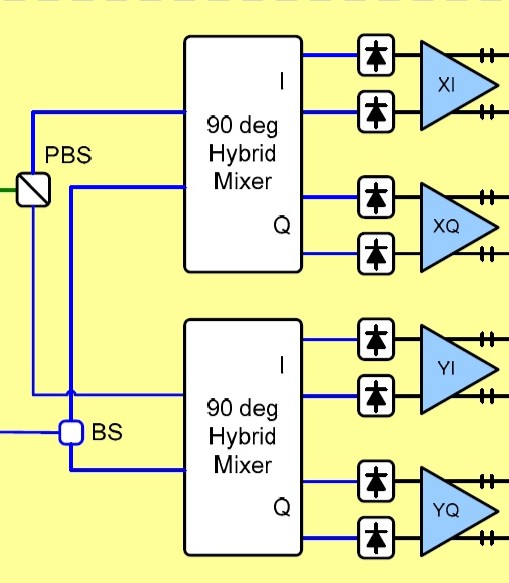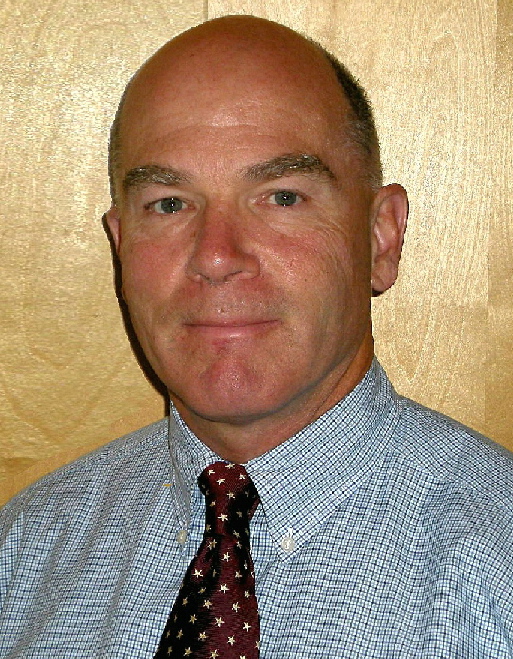There were several noteworthy announcements at the European Conference on Optical Communications (ECOC) held in Geneva in September. Gazettabyte spoke to Finisar, Oclaro and Opnext about their ECOC announcements and the associated market trends.
100 Gig module
Opnext announced the first 100 Gigabit-per-second (Gbps) transponder at ECOC, a much anticipated industry development.
 "Quite a few system vendors .... are looking at 'make-versus-buy' for the next-generation [of 100 Gig]."
"Quite a few system vendors .... are looking at 'make-versus-buy' for the next-generation [of 100 Gig]."
Ross Saunders, Opnext
The OTM-100 is a dual-polarisation, quadrature phase-shift keying (DP-QPSK) coherent design that fits into a 5x7-inch module and meets the Optical Internetworking Forum's (OIF) multi-source agreement (MSA). The module's coherent receiver uses a digital signal processor (DSP) developed by NTT Electronics.
"At the moment we are going through the bring-up in the lab," says Ross Saunders, general manager, next-gen transport for Opnext Subsystems.
According to Opnext, system vendors that have their own 100Gbps coherent designs are also interested in the 100Gbps module.
"There are a few developing in-house [100Gbps designs] that are not interested in going for the module solution," says Saunders. "But there is another camp - quite a few system vendors - who have their first-generation solution that are looking at 'make-versus-buy' for the next-generation."
System vendors' first-generation 100Gbps designs use hard-decision forward error correction (FEC). But customers want a 100Gbps design with a reach that gets close to matching that of 10Gbps, 40Gbps DPSK and 40Gbps coherent designs, says Opnext.
"There is demand to go to the next-generation with its higher overhead and soft-decision FEC," says Saunders. "That [soft-decision FEC] buys another 2-3dB of performance so you don't need as many regeneration stages." Translated into distances, the reach using soft-decision FEC is 1500-1600km rather than 800-900km, says Saunders.
Opnext expects to deliver samples to lead customers before the year end.
Meanwhile, Oclaro is also developing a 100Gbps coherent module. "It is on track and we expect to ship in early 2012," says Per Hansen, vice president of product marketing, optical networks solutions at Oclaro.
100 Gig receiver
Oclaro announced an integrated 100Gbps coherent receiver at ECOC.
The company claims the device takes less than half the board area as defined by the OIF. "Board space is at a premium on line cards," says Robert Blum, director of product marketing for Oclaro's photonic components. "If you can increase functionality, that translates to lower cost."
 100 Gig indium phosphide integrated receiver Source: OclaroThe device has two inputs and four outputs. The inputs are the received 100Gbps optical signal and the local oscillator and the outputs are from the four balanced detectors.
100 Gig indium phosphide integrated receiver Source: OclaroThe device has two inputs and four outputs. The inputs are the received 100Gbps optical signal and the local oscillator and the outputs are from the four balanced detectors.
"The entire 90-degree hybrid mixing and the photo detection are all done in an indium phosphide single chip," says Blum.
40 Gig modules
Oclaro also announced it is shipping in volume its 40Gbps coherent transponder.
"There is a lot of interest from equipment vendors and service providers to use coherent in their networks," says Hansen "Coherent has advantages in the way it can overcome impairments."
Hansen says coherent will be used in the majority of new network deployments in future: "If you are deploying a network that is geared to 40Gbps and above, people will most likely deploy an all-coherent solution."
One reason why coherent is favoured is that the same technology can be scaled to 100Gbps, 400Gbps and even a Terabit.
Coherent technology, whose DSP is used for dispersion compensation, is also suited for mesh networks where switching wavelengths occurs. The coherent technology can compensate when it encounters new dispersion conditions following the switching.
In contrast 40Gbps direct-detection modules interest vendors for use in existing networks alongside 2.5Gbps and 10Gbps wavelengths, says Oclaro.

For networks geared to 40Gbps and above, people will most likely deploy an all-coherent solution
Per Hansen, Oclaro
"They can have very high power which can make it difficult for a new [high-speed] channel to live next to them but direct-detection modules are robust for those types of applications," says Hansen. "Where you will see people upgrading their existing networks, they will use DPSK or DQPSK transponders."
But Oclaro says that the split is not that clear-cut: 40Gbps coherent for new builds and direct-detection schemes when used alongside existing 10Gbps wavelengths. "There is a lot of variability in both of these approaches such that you can tailor them to different applications," says Hansen. "In the end, what it will come down to is what the customer is happy with and the price points, more than fundamental technology capabilities."
40G client-side interfaces
Finisar demonstrated at ECOC a serial 40Gbps CFP module that meets the 2km 40GBASE-FR standard.
"This will be the first 40 Gig serial module that is in a pluggable form factor," says Rafik Ward, vice president of marketing at Finisar. Indeed Finisar's CFP is a tri-rate design that also supports the ITU-T OC-768 SONET/SDH very short reach (VSR) and OTU3 standards.
The FR interface is the IEEE's 40 Gigabit Ethernet equivalent of the existing OC-768 VSR interface. The original 300pin VSR interface has a 16-channel electrical interface, each operating at 2.5Gbps, while the CFP module uses 10Gbps electrical channels.
IP routers can now be connected to DWDM platforms using the pluggable module, says Finisar. The pluggable will also enable system vendors to design denser line cards with two or even four CFP interfaces, as well as the option of changing the CFP to support other standards as required.
The tri-rate FR pluggable module's power consumption will be below 8W, says Finisar, which is shipping samples to customers.
Meanwhile, Opnext has announced it is sampling its 40GBASE-LR4, the 10km 40 Gigabit Ethernet interface, in a QSFP module. "It will be readily available by the end of the year," says Jon Anderson, director of technology programme at Opnext.
 "The 40GBASE-LR4 [QSFP] will be readily available by the end of the year"
"The 40GBASE-LR4 [QSFP] will be readily available by the end of the year"
Jon Anderson, Opnext
Tunable laser XFP
Opnext and Oclaro have both announced 10Gbps tunable XFPs at ECOC. Having two new suppliers of tunable XFPs joining JDS Uniphase will increase market competition and reduce the price of the tunable pluggable.
"It really is a replacement for 300-pin transponders," says Blum. "You can now migrate 10Gbps links to a pluggable form factor."
Oclaro's tunable XFP is released for production. Opnext says its tunable XFP will be in volume production by early 2012.
ROADMs get 1x20 WSS
Finisar announced a 1x20 high-port count wavelength selective switch (WSS). The WSS supports a flexible spectrum grid that allows the channel width to be varied in increments of 12.5GHz, enabling future line rates above 100Gbps to be supported.
"This [1x20 WSS] has the possibility to enable some pretty interesting applications for next generation - colourless, directionless, contentionless networks," says Ward.

"This [40GBASE-FR] will be the first 40 Gig serial module that is in a pluggable form factor"
Rafik Ward, Finisar.
One common application of the 1x20 WSS is implementing a multi-degree node. The degree refers to the number of points that node branches out to in a mesh network, says Finisar. "The fundamental question is how many ports do you have in that node?" explains Ward.
For example, an 8-degree node communicates with eight other points in the mesh. With a 1x20 WSS, the architecture uses eight of the 20 as express ports - those 8 ports interfacing with other WSSs in the node - while the remaining 12 ports on that 1x20 WSS are used as add and drop ports.
"The advantage of a 1x20 WSS in this case is enabling a large number of express ports and a large number of add ports," says Ward.
A second application is for colourless or tunable multiplexing.
"One of the problems today enabling colourless ROADM operation is that typically the muxes and demuxes used are AWGs," says Ward. Having a tunable laser is all well and good but it becomes hardwired to a specific port because of the arrayed waveguide grating (AWG). "That specific port is configured for that particular wavelength," he says.
To make an 80-channel colourless design, that does not require manual intervention, four 1x20 WSSs are placed side-by-side with a 1x4 WSS connecting the four. This is a more elegant and compact than using existing 1x9 WSSs, which requires more than twice as many WSS units.
Pump lasers
Oclaro announced two 980nm pump laser products that enable more compact, lower-power amplifier designs.
 "Board space is at a premium on line cards"
"Board space is at a premium on line cards"
Robert Blum, Oclaro
One is an uncooled 980nm 500mW pump laser and the second is two 600mW pump lasers in a single package. The dual-pump laser product halves the footprint and requires a single thermo-electric cooler only.
"The power consumption is significantly lower than what it would be for two discrete pump lasers," says Blum. "The 300mW uncooled pump laser doesn't go away but for dual-stage or mid-stage optical amplifiers instead of using multiple [300mW] lasers, you can use a single package," says Blum.
GPON-on a-stick
Finisar announced a 'GPON-on-a-stick' SFP module. The result of its acquisition of Broadway Networks in 2010, the SFP-based GPON optical network unit (ONU) enables an Ethernet switch to be connected to a PON. The product is aimed at enterprises as well as large residential premises. The GPON stick complements the company's existing EPON stick.
Further information:
ECOC 2011 Market focus presentations, click here
Rapid progress in optical transport seen at ECOC 2011, Ovum's Karen Liu, click here
Finisar and Capella enter 1×20 WSS market; signals shift, Ovum's Daryl Inniss, click here